Abstract
A range of 49 bacteriocins was used to type 311 strains of Clostridium perfringens isolated from food poisoning outbreaks. Strains of same serotype within an outbreak showed similar patterns of susceptibility to bacteriocins, whereas strains of different serotype isolated from different sources produced many variations in bacteriocin susceptibility patterns. The 311 strains, along with isolates from a wide range of sources were screened for their ability to produce bacteriocins. A much greater proportion of the strains from food poisoning outbreaks was bacteriocinogenic than were isolates from human and animal infections, various foods and the environment.
Full text
PDF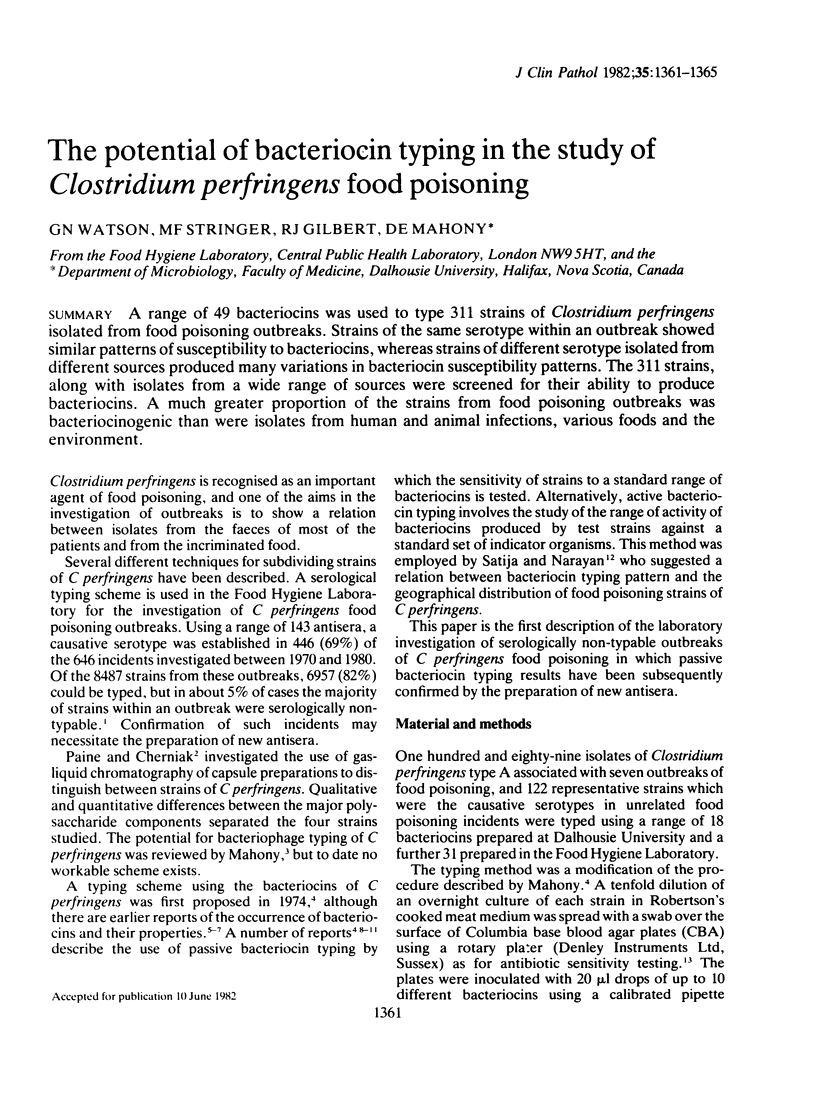
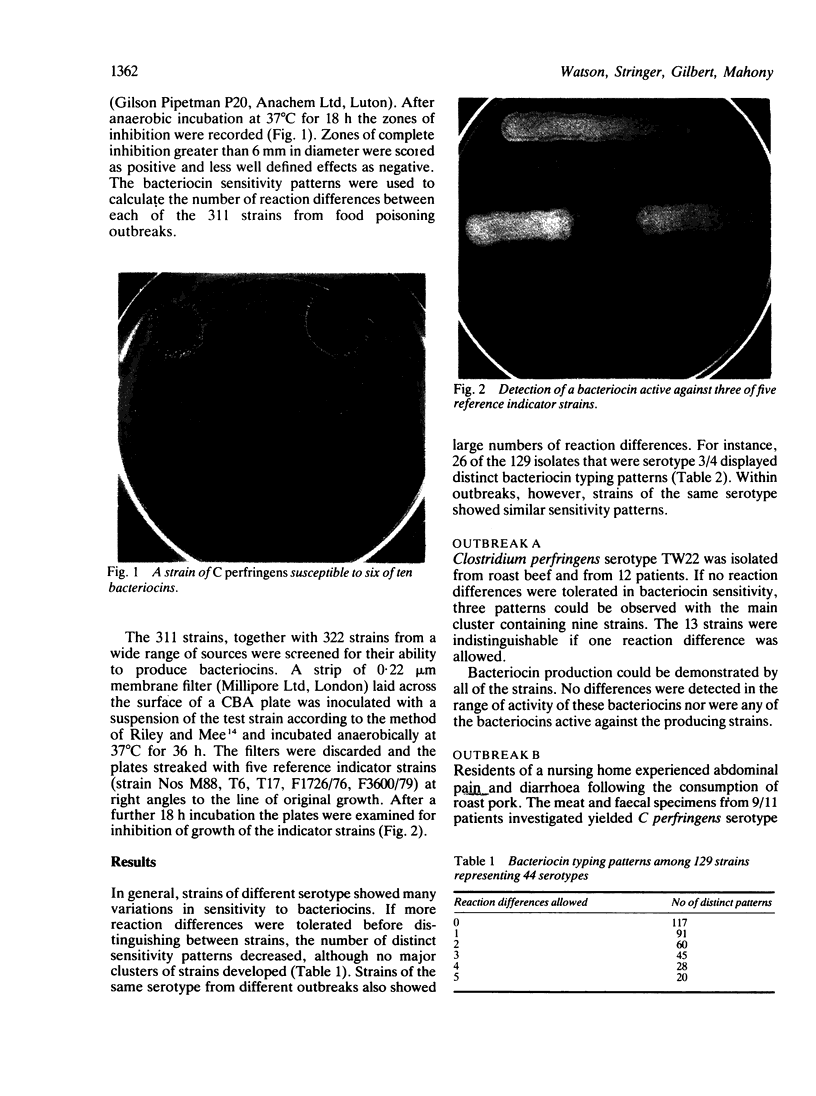
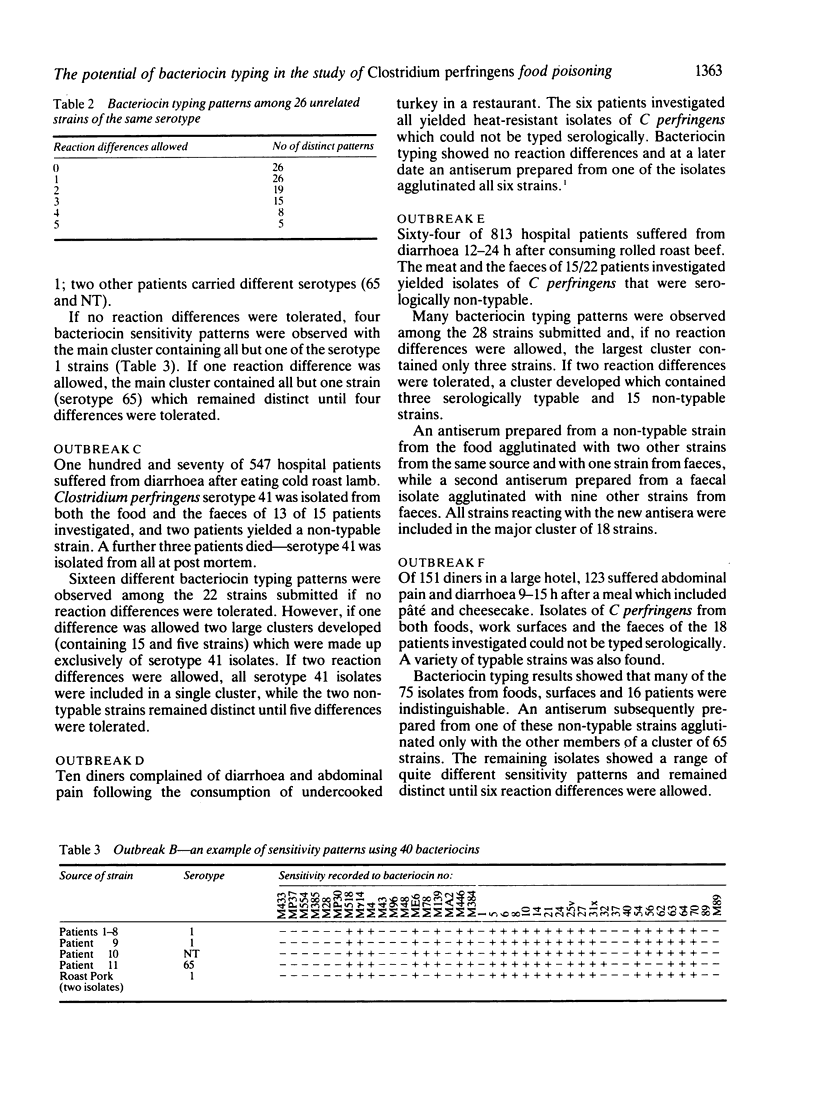
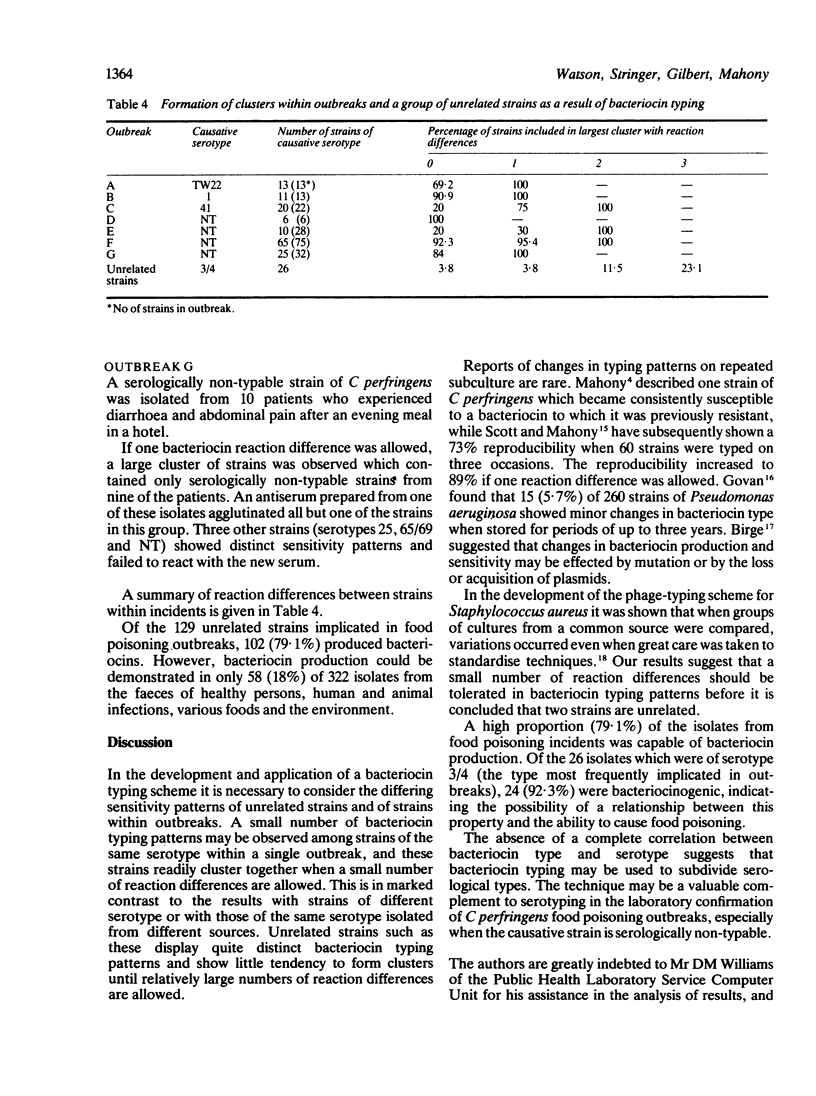
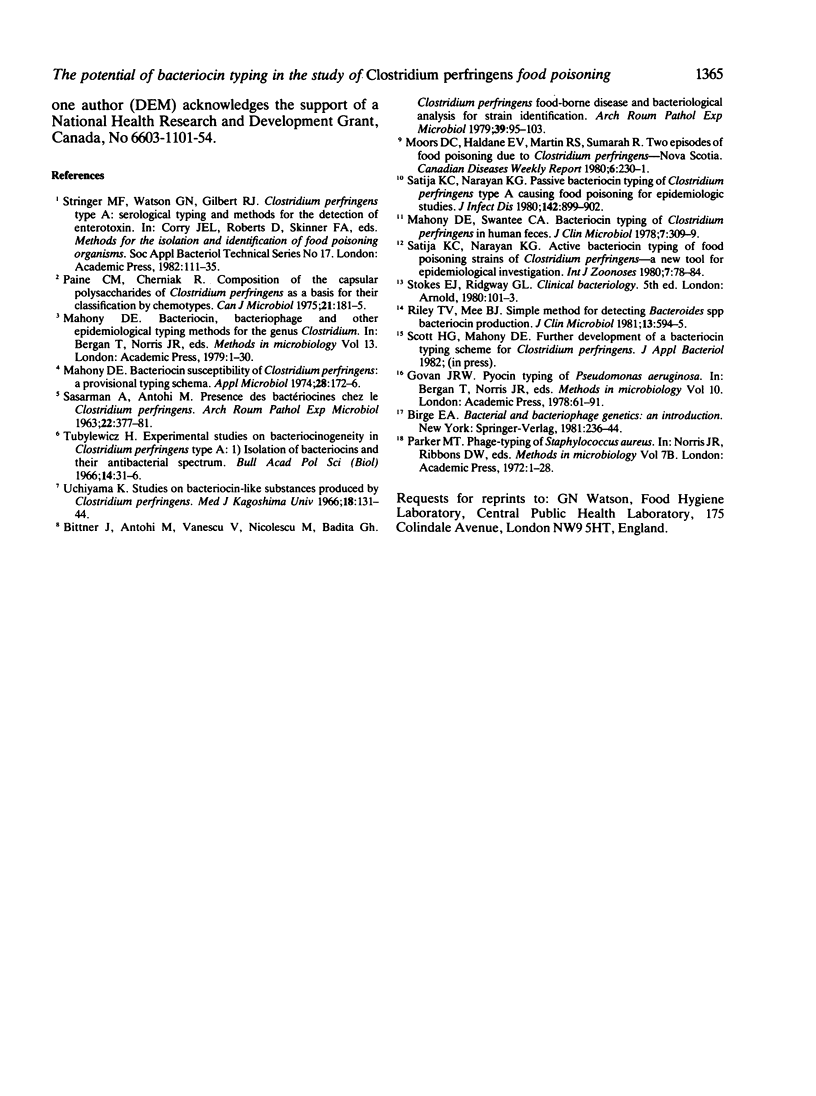
Images in this article
Selected References
These references are in PubMed. This may not be the complete list of references from this article.
- Bittner J., Antohi M., Voinescu V., Nicolescu M., Bădiţ G. Clostridium perfringens food-borne disease and bacteriological analysis for strain identification. Arch Roum Pathol Exp Microbiol. 1980 Apr-Jun;39(2):95–103. [PubMed] [Google Scholar]
- Mahony D. E. Bacteriocin susceptibility of Clostridium perfringens: a provisional typing schema. Appl Microbiol. 1974 Aug;28(2):172–176. doi: 10.1128/am.28.2.172-176.1974. [DOI] [PMC free article] [PubMed] [Google Scholar]
- Mahony D. E., Swantee C. A. Bacteriocin typing of Clostridium perfringens in human feces. J Clin Microbiol. 1978 Mar;7(3):307–309. doi: 10.1128/jcm.7.3.307-309.1978. [DOI] [PMC free article] [PubMed] [Google Scholar]
- Paine C. M., Cherniak R. Composition of the capsular polysaccharides of Clostridium perfringens as a basis for their classification by chemotypes. Can J Microbiol. 1975 Feb;21(2):181–185. doi: 10.1139/m75-026. [DOI] [PubMed] [Google Scholar]
- Riley T. V., Mee B. J. Simple method for detecting Bacteroides spp. bacteriocin production. J Clin Microbiol. 1981 Mar;13(3):594–595. doi: 10.1128/jcm.13.3.594-595.1981. [DOI] [PMC free article] [PubMed] [Google Scholar]
- Satija K. C., Narayan K. G. Active perfringocin typing of food poisoning strains of Clostridium perfringens type A--a new tool for epidemiological investigations. Int J Zoonoses. 1980 Dec;7(2):78–84. [PubMed] [Google Scholar]
- Satija K. C., Narayan K. G. Passive bacteriocin typing of strains of Clostridium perfringens type A causing food poisoning for epidemiologic studies. J Infect Dis. 1980 Dec;142(6):899–902. doi: 10.1093/infdis/142.6.899. [DOI] [PubMed] [Google Scholar]
- Tubylewicz H. Experimental studies on bacteriocinogeneity in Clostridium perfringens type A. I. Isolation of bacteriocines and their antibacterial spectrum. Bull Acad Pol Sci Biol. 1966;14(1):31–36. [PubMed] [Google Scholar]




